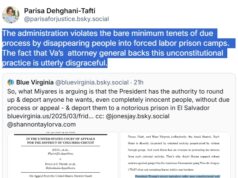SPONSORED CONTENT
Burglary: What It Is and How to Stay Protected
It’s estimated that 2.5 million burglaries occur in the United States every year. The idea of burglary is a terrifying one, for sure. Beyond theft, an unwelcome guest in your home is unsettling. No one wants to feel like their home is not safe and secure.
What is Burglary?
The definition of burglary is someone unlawfully entering a structure, like a home or business, with intent to commit a theft or felony. The person does not need to enter violently for a crime to be considered burglary.
Home invasion is a form of burglary defined as breaking into an occupied residence. Home invasions make up about two-thirds of burglaries in the U.S. each year.
“Burglary is usually classified into four distinct categories,” says Omeed E. Berenjian of Bk Law Group. “While fourth-degree burglary is a misdemeanor, first-degree, second-degree, and third-degree are all felonies.”
It’s considered first-degree burglary when someone enters a home intending to commit a crime and uses a deadly weapon to harm a victim.
Second-degree involves entering a non-residence, like a business or building detached from a home.
Third-degree burglary does not include violence. Usually, a person is charged with third-degree burglary when there is no apparent reason they broke into the structure.
Fourth-degree burglary is generally charged when someone commits theft from an outside area, like a yard or a business’s property.
Where and When Burglaries Are Happening
When most people picture a break-in, they think of someone sneaking in under the cover of darkness. It may be surprising to know, then, that burglaries tend to happen most often during the day on weekdays. This is likely because these times are when people are away from home.
Burglaries happen more often in urban settings than in rural areas. Another interesting fact is that burglars target renters more often than homeowners. This may be because more people are coming and going from rental properties with multiple units. This makes it easier for a burglar to slip by unnoticed.
Burglary and Home Insurance
Standard homeowners insurance usually covers home damage and loss of personal items at their depreciated value. In 2018, the reported average loss from burglary was a little under $3,000.
The type of policy a person has will determine the coverage they are given. Actual Cash Value (ACV) coverage will cover depreciated value, which can mean receiving much less than what a person initially paid for an item. Replacement Cost Value (RCV) coverage, on the other hand, can mean receiving enough to cover the costs of buying new things to replace what was stolen. Other policies might have hybrid coverage, which differs across providers.
Staying Protected
There are many things a person can do to protect their home – locking doors and windows when home or away is a great first step to take. When you’re away, consider using automatic lights and leaving a car in the driveway to make it look like someone is home.
Technology can also keep you protected. From security cameras to alarms, many people always watch what’s happening in and around their homes. A lot of these systems even alert user’s smartphones about potential threats.
While it’s essential to physically protect your home, there is no way to ensure burglary will not affect you. Talking to an agent about how much coverage you need based on your home and belongings is the smartest way to keep yourself protected.












